
K. Ulbrich, K. Holá, V. Šubr, A. Bakandritsos, J. Tuček, R. Zbořil: Targeted Drug Delivery with Polymers and Magnetic Nanoparticles: Covalent and Noncovalent Approaches, Release Control, and Clinical Studies, CHEMICAL REVIEWS, vol. 116, iss. 9, pp. 5338-5431, 2016.
DOI: 10.1021/acs.chemrev.5b00589, IF = 47.928
Abstract: Targeted delivery combined with controlled drug release has a pivotal role in the future of personalized medicine. This review covers the principles, advantages, and drawbacks of passive and active targeting based on various polymer and magnetic iron oxide nanoparticle carriers with drug attached by both covalent and noncovalent pathways. Attention is devoted to the tailored conjugation of targeting ligands (e.g., enzymes, antibodies, peptides) to drug carrier systems. Similarly, the approaches toward controlled drug release are discussed. Various polymer–drug conjugates based, for example, on polyethylene glycol (PEG), N-(2-hydroxypropyl)methacrylamide (HPMA), polymeric micelles, and nanoparticle carriers are explored with respect to absorption, distribution, metabolism, and excretion (ADME scheme) of administrated drug. Design and structure of superparamagnetic iron oxide nanoparticles (SPION) and condensed magnetic clusters are classified according to the mechanism of noncovalent drug loading involving hydrophobic and electrostatic interactions, coordination chemistry, and encapsulation in porous materials. Principles of covalent conjugation of drugs with SPIONs including thermo- and pH-degradable bonds, amide linkage, redox-cleavable bonds, and enzymatically-cleavable bonds are also thoroughly described. Finally, results of clinical trials obtained with polymeric and magnetic carriers are analyzed highlighting the potential advantages and future directions in targeted anticancer therapy.
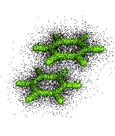
M. Dubecký, L. Mitas, P. Jurečka: Noncovalent Interactions by Quantum Monte Carlo, CHEMICAL REVIEWS, vol. 116, iss. 9, pp. 5188-5215, 2016.
DOI: 10.1021/acs.chemrev.5b00577, IF = 47.928
Abstract: Quantum Monte Carlo (QMC) is a family of stochastic methods for solving quantum many-body problems such as the stationary Schrödinger equation. The review introduces basic notions of electronic structure QMC based on random walks in real space as well as its advances and adaptations to systems with noncovalent interactions. Specific issues such as fixed-node error cancellation, construction of trial wave functions, and efficiency considerations that allow for benchmark quality QMC energy differences are described in detail. Comprehensive overview of articles covers QMC applications to systems with noncovalent interactions over the last three decades. The current status of QMC with regard to efficiency, applicability, and usability by nonexperts together with further considerations about QMC developments, limitations, and unsolved challenges are discussed as well.

M. H. Kolář, P. Hobza: Computer Modeling of Halogen Bonds and Other σ-Hole Interactions, CHEMICAL REVIEWS, vol. 116, iss. 9, pp. 5155-5187, 2016.
DOI: 10.1021/acs.chemrev.5b00560, IF = 47.928
Abstract: In the field of noncovalent interactions a new paradigm has recently become popular. It stems from the analysis of molecular electrostatic potentials and introduces a label, which has recently attracted enormous attention. The label is σ-hole, and it was first used in connection with halogens. It initiated a renaissance of interest in halogenated compounds, and later on, when found also on other groups of atoms (chalcogens, pnicogens, tetrels and aerogens), it resulted in a new direction of research of intermolecular interactions. In this review, we summarize advances from about the last 10 years in understanding those interactions related to σ-hole. We pay particular attention to theoretical and computational techniques, which play a crucial role in the field.
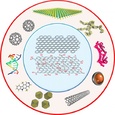
V. Georgakilas, J. N. Tiwari, K. C. Kemp, J. A. Perman, A. B. Bourlinos, K. S. Kim, R. Zboril: Noncovalent Functionalization of Graphene and Graphene Oxide for Energy Materials, Biosensing, Catalytic, and Biomedical Applications, CHEMICAL REVIEWS, vol. 116, iss. 9, pp. 5464–5519, 2016.
DOI: 10.1021/acs.chemrev.5b00620, IF = 47.928
Abstract: This Review focuses on noncovalent functionalization of graphene and graphene oxide with various species involving biomolecules, polymers, drugs, metals and metal oxide-based nanoparticles, quantum dots, magnetic nanostructures, other carbon allotropes (fullerenes, nanodiamonds, and carbon nanotubes), and graphene analogues (MoS2, WS2). A brief description of π–π interactions, van der Waals forces, ionic interactions, and hydrogen bonding allowing noncovalent modification of graphene and graphene oxide is first given. The main part of this Review is devoted to tailored functionalization for applications in drug delivery, energy materials, solar cells, water splitting, biosensing, bioimaging, environmental, catalytic, photocatalytic, and biomedical technologies. A significant part of this Review explores the possibilities of graphene/graphene oxide-based 3D superstructures and their use in lithium-ion batteries. This Review ends with a look at challenges and future prospects of noncovalently modified graphene and graphene oxide.
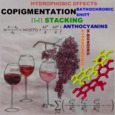
P. Trouillas, J. C. Sancho-García, V. De Freitas, J. Gierschner, M. Otyepka, and O. Dangles: Stabilizing and Modulating Color by Copigmentation: Insights from Theory and Experiment, CHEMICAL REVIEWS, vol. 116, iss. 9, pp. 4937–4982, 2016.
DOI: 10.1021/acs.chemrev.5b00507, IF = 47.928
Abstract: Natural anthocyanin pigments/dyes and phenolic copigments/co-dyes form noncovalent complexes, which stabilize and modulate (in particular blue, violet, and red) colors in flowers, berries, and food products derived from them (including wines, jams, purees, and syrups). This noncovalent association and their electronic and optical implications constitute the copigmentation phenomenon. Over the past decade, experimental and theoretical studies have enabled a molecular understanding of copigmentation. This review revisits this phenomenon to provide a comprehensive description of the nature of binding (the dispersion and electrostatic components of π–π stacking, the hydrophobic effect, and possible hydrogen-bonding between pigment and copigment) and of spectral modifications occurring in copigmentation complexes, in which charge transfer plays an important role. Particular attention is paid to applications of copigmentation in food chemistry.
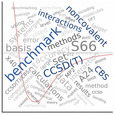
J. Řezáč, P. Hobza: Benchmark Calculations of Interaction Energies in Noncovalent Complexes and Their Applications, CHEMICAL REVIEWS vol. 116, iss. 9, pp. 5038-5071, 2016.
DOI: 10.1021/acs.chemrev.5b00526, IF = 47.928
Abstract: Data sets of benchmark interaction energies in noncovalent complexes are an important tool for quantifying the accuracy of computational methods used in this field, as well as for the development of new computational approaches. This review is intended as a guide to conscious use of these data sets. We discuss their construction and accuracy, list the data sets available in the literature, and demonstrate their application to validation and parametrization of quantum-mechanical computational methods. In practical model systems, the benchmark interaction energies are usually obtained using composite CCSD(T)/CBS schemes. To use these results as a benchmark, their accuracy should be estimated first. We analyze the errors of this methodology with respect to both the approximations involved and the basis set size. We list the most prominent data sets covering various aspects of the field, from general ones to sets focusing on specific types of interactions or systems. The benchmark data are then used to validate more efficient computational approaches, including those based on explicitly correlated methods. Special attention is paid to the transition to large systems, where accurate benchmarking is difficult or impossible, and to the importance of nonequilibrium geometries in parametrization of more approximate methods.
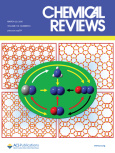
M. B. Gawande, A. Goswami, F. Felpin, T. Asefa, X. Huang, R. Silva, X. Zou, R. Zboril, R. S. Varma: Cu and Cu-Based Nanoparticles: Synthesis and Applications in Catalysis, CHEMICAL REVIEWS, vol. 116, iss. 6, pp. 3722-3811, 2016.
DOI: 10.1021/acs.chemrev.5b00482, IF = 47.928
Abstract: The applications of copper (Cu) and Cu-based nanoparticles, which are based on the earth-abundant and inexpensive copper metal, have generated a great deal of interest in recent years, especially in the field of catalysis. The possible modification of the chemical and physical properties of these nanoparticles using different synthetic strategies and conditions and/or via postsynthetic chemical treatments has been largely responsible for the rapid growth of interest in these nanomaterials and their applications in catalysis. In addition, the design and development of novel support and/or multimetallic systems (e.g., alloys, etc.) has also made significant contributions to the field. In this comprehensive review, we report different synthetic approaches to Cu and Cu-based nanoparticles (metallic copper, copper oxides, and hybrid copper nanostructures) and copper nanoparticles immobilized into or supported on various support materials (SiO2, magnetic support materials, etc.), along with their applications in catalysis. The synthesis part discusses numerous preparative protocols for Cu and Cu-based nanoparticles, whereas the application sections describe their utility as catalysts, including electrocatalysis, photocatalysis, and gas-phase catalysis. We believe this critical appraisal will provide necessary background information to further advance the applications of Cu-based nanostructured materials in catalysis.

J. Tuček, P. Błoński, Z. Sofer, P. Šimek, M. Petr, M. Pumera, M. Otyepka, R. Zbořil: Sulfur Doping Induces Strong Ferromagnetic Ordering in Graphene: Effect of Concentration and Substitution Mechanism, ADV. MATER. vol. 28, iss. 25, pp. 5045-5053, 2016.
DOI: 10.1002/adma.201600939, IF = 19.791
Abstract: Imprinting ferromagnetism to a graphene structure by substitution of carbon atoms with sulfur is reported. S-doped graphene (4.2 at%) shows strong ferromagnetic properties with saturation magnetization exceeding 5.5 emu g−1 at 2 K, which is among the highest values reported for any sp-based system. The remarkable magnetic response is attributed to delocalization of electrons from sulfur injected into the graphene conduction band.
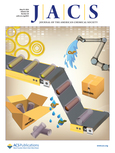
C. C. Givelet, P. I. Dron, J. Wen, T. F. Magnera, M. Zamadar, K. Čépe, H. Fujiwara, Y. Shi, M. R. Tuchband, N. Clark, R. Zbořil, J. Michl: Challenges in the Structure Determination of Self-Assembled Metallacages: What Do Cage Cavities Contain, Internal Vapor Bubbles or Solvent and/or Counterions?, J. AM. CHEM. SOC. vol. 138, iss. 20, pp. 6676-6687, 2016.
DOI: 10.1021/jacs.5b12050, IF = 13.858
Abstract: Proving the structures of charged metallacages obtained by metal ion coordination-driven solution self-assembly is challenging, and the common use of routine NMR spectroscopy and mass spectrometry is unreliable. Carefully determined diffusion coefficients from diffusion-ordered proton magnetic resonance (DOSY NMR) for six cages of widely differing sizes lead us to propose a structural reassignment of two molecular cages from a previously favored trimer to a pentamer or hexamer, and another from a trimer to a much higher oligomer, possibly an intriguing tetradecamer. In the former case, strong support for the reassignment to a larger cage is provided by an observation of a slow reversible transformation of the initially formed cage into a smaller but spectrally very similar one upon dilution. In the latter case, freeze-fracture transmission electron micrographs demonstrate that at least some of the solutions are colloidal, and high-resolution electron transmission and atomic force microscopy images are compatible with a tetradecamer but not a trimer. Comparison of solute partial molar volumes deduced from measurement of solution density with volumes anticipated from molecular models argues strongly against the presence of large voids (solvent vapor bubbles) in cages dissolved in nitromethane. The presence of bubbles was previously proposed in an attempt to account for the bilinear nature of the Eyring plot of the rate constant for pyridine ligand edge exchange reaction in one of the cages and for the unusual activation parameters in the high-temperature regime. An alternative interpretation is proposed now.
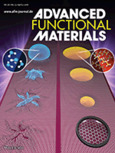
X. Chia, A. Adriano, P. Lazar, Z. Sofer, J. Luxa, M. Pumera: Layered Platinum Dichalcogenides (PtS 2 , PtSe 2 , and PtTe 2 ) Electrocatalysis: Monotonic Dependence on the Chalcogen Size , ADV. FUNCT. MATER. 2016.
DOI: 10.1002/adfm.201505402, IF = 12.124
Abstract: Presently, research in layered transition metal dichalcogenides (TMDs) for numerous electrochemical applications have largely focused on Group 6 TMDs, especially MoS2 and WS2, whereas TMDs belonging to other groups are relatively unexplored. This work unravels the electrochemistry of Group 10 TMDs: specifically PtS2, PtSe2, and PtTe2. Here, the inherent electroactivities of these Pt dichalcogenides and the effectiveness of electrochemical activation on their charge transfer and electrocatalytic properties are thoroughly examined. By performing density functional theory (DFT) calculations, the electrochemical and electrocatalytic behaviors of the Pt dichalcogenides are elucidated. The charge transfer and electrocatalytic attributes of the Pt dichalcogenides are strongly associated with their electronic structures. In terms of charge transfer, electrochemical activation has been successful for all Pt dichalcogenides as evident in the faster heterogeneous electron transfer (HET) rates observed in electrochemically reduced Pt dichalcogenides. Interestingly, the hydrogen evolution reaction (HER) performance of the Pt dichalcogenides adheres to a trend of PtTe2 > PtSe2 > PtS2 whereby the HER catalytic property increases down the chalcogen group. Importantly, the DFT study shows this correlation to their electronic property in which PtS2 is semiconducting, PtSe2is semimetallic, and PtTe2 is metallic. Furthermore, Pt dichalcogenides are effectively activated for HER. Distinct electronic structures of Pt dichalcogenides account for their different responses to electrochemical activation. Among all activated Pt dichalcogenides, PtS2 shows most accentuated improvement as a HER electrocatalyst with an exceptional 50% decline in HER overpotential. Knowledge on Pt dichalcogenides provides valuable insights in the field of TMD electrochemistry, in particular, for the currently underrepresented Group 10 TMDs.

J. Tuček, Z. Sofer, D. Bouša, M. Pumera, K. Holá, A. Malá, K. Poláková, M. Havrdová, K. Čépe, O. Tomanec, R. Zbořil: Air-stable superparamagnetic metal nanoparticles entrapped in graphene oxide matrix, NATURE COMMUNICATIONS vol. 7, pp. 12879, 2016.
DOI: 10.1038/ncomms12879, IF = 12.124
Abstract: Superparamagnetism is a phenomenon caused by quantum effects in magnetic nanomaterials. Zero-valent metals with diameters below 5 nm have been suggested as superior alternatives to superparamagnetic metal oxides, having greater superspin magnitudes and lower levels of magnetic disorder. However, synthesis of such nanometals has been hindered by their chemical instability. Here we present a method for preparing air-stable superparamagnetic iron nanoparticles trapped between thermally reduced graphene oxide nanosheets and exhibiting ring-like or core-shell morphologies depending on iron concentration. Importantly, these hybrids show superparamagnetism at room temperature and retain it even at 5 K. The corrected saturation magnetization of 185 Am2 kg–1 is among the highest values reported for iron-based superparamagnets. The synthetic concept is generalized exploiting functional groups of graphene oxide to stabilize and entrap cobalt, nickel and gold nanoparticles, potentially opening doors for targeted delivery, magnetic separation and imaging applications.
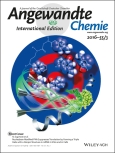
Jayaramulu, K., Datta, K. K. R., Rösler, C., Petr, M., Otyepka, M., Zboril, R. and Fischer, R. A.: Biomimetic Superhydrophobic/Superoleophilic Highly Fluorinated Graphene Oxide and ZIF-8 Composites for Oil–Water Separation, ANGEWANDTE CHEMIE INTERNATIONAL EDITION, vol. 55, iss. 3, pp. 1178-1182, 2016.
DOI: 10.1002/anie.201507692, IF = 11.994
Abstract: Superhydrophobic/superoleophilic composites HFGO@ZIF-8 have been prepared from highly fluorinated graphene oxide (HFGO) and the nanocrystalline zeolite imidazole framework ZIF-8. The structure-directing and coordination-modulating properties of HFGO allow for the selective nucleation of ZIF-8 nanoparticles at the graphene surface oxygen functionalities. This results in localized nucleation and size-controlled ZIF-8 nanocrystals intercalated in between HFGO layers. The composite microstructure features fluoride groups bonded at the graphene. Self-assembly of a unique micro-mesoporous architecture is achieved, where the micropores originate from ZIF-8 nanocrystals, while the functionalized mesopores arise from randomly organized HFGO layers separated by ZIF-8 nanopillars. The hybrid material displays an exceptional high water contact angle of 162° and low oil contact angle of 0° and thus reveals very high sorption selectivity, fast kinetics, and good absorbencies for nonpolar/polar organic solvents and oils from water. Accordingly, Sponge@HFGO@ZIF-8 composites are successfully utilized for oil–water separation.
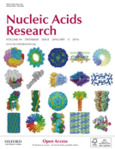
J. Isonet al.: Tools and data services registry: a community effort to document bioinformatics resources, NUCLEIC ACIDS RES vol. 44, iss. D1, pp. D38-D47, 2016.
DOI: 10.1093/nar/gkv1116, IF = 10.162
Abstract: Life sciences are yielding huge data sets that underpin scientific discoveries fundamental to improvement in human health, agriculture and the environment. In support of these discoveries, a plethora of databases and tools are deployed, in technically complex and diverse implementations, across a spectrum of scientific disciplines. The corpus of documentation of these resources is fragmented across the Web, with much redundancy, and has lacked a common standard of information. The outcome is that scientists must often struggle to find, understand, compare and use the best resources for the task at hand. Here we present a community-driven curation effort, supported by ELIXIR—the European infrastructure for biological information—that aspires to a comprehensive and consistent registry of information about bioinformatics resources. The sustainable upkeep of this Tools and Data Services Registry is assured by a curation effort driven by and tailored to local needs, and shared amongst a network of engaged partners. As of November 2015, the registry includes 1785 resources, with depositions from 126 individual registrations including 52 institutional providers and 74 individuals. With community support, the registry can become a standard for dissemination of information about bioinformatics resources: we welcome everyone to join us in this common endeavour. The registry is freely available at https://bio.tools.
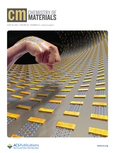
O. Kozák, M. Sudolská, G. Pramanik, P. Cígler, M. Otyepka, R. Zbořil: Photoluminescent Carbon Nanostructures, CHEMISTRY OF MATERIALS vol. 28, iss. 12, pp. 4085-4128, 2016.
DOI: 10.1021/acs.chemmater.6b01372, IF = 9.466
Abstract: Photoluminescent nanosized allotropes of carbon have attracted considerable interest because of their diverse optical properties depending on their crystal structure, size, and morphology, and chemical functionalization. Here, we present the first critical review covering the photoluminescence (PL) properties, their control, and origin in various carbon allotropes and their composites. Different mechanisms by which carbon nanostructures exhibit PL are discussed, involving excitonic PL in carbon nanotubes, thermally activated delayed fluorescence in spherical fullerenes, the presence of impurity–vacancy color centers in nanodiamonds, aromatic sp2 domains in reduced graphene oxide, and surface chromophores or defect-related PL in carbon dots. We critically analyze the intrinsic and external effects affecting the PL properties (spectral shift, decay, quantum yield) from both experimental data and theoretical calculations. The key parameters addressed include, for example, the type and content of impurity elements in nanodiamonds (NV and SiV centers), chemical composition in reduced graphene oxides, external effects (temperature, solvent) in C60 fullerene, structural type (single-wall versus multi-wall carbon nanotubes), and the roles of doping and surface functional groups in the PL behavior of carbon/graphene dots.
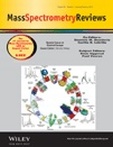
T. Pluháček, K. Lemr, D. Ghosh, D. Milde, J. Novák, V. Havlíček: Characterization of microbial siderophores by mass spectrometry, MASS SPEC REV vol. 35, iss. 1, pp. 35-47, 2016.
DOI: 10.1002/mas.21461, IF = 9.373
Abstract: Siderophores play important roles in microbial iron piracy, and are applied as infectious disease biomarkers and novel pharmaceutical drugs. Inductively coupled plasma and molecular mass spectrometry (ICP-MS) combined with high resolution separations allow characterization of siderophores in complex samples taking advantages of mass defect data filtering, tandem mass spectrometry, and iron-containing compound quantitation. The enrichment approaches used in siderophore analysis and current ICP-MS technologies are reviewed. The recent tools for fast dereplication of secondary metabolites and their databases are reported. This review on siderophores is concluded with their recent medical, biochemical, geochemical, and agricultural applications in mass spectrometry context.
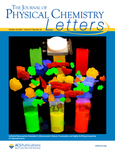
S. Bottaro, P. Banáš, J. Šponer, G. Bussi: Free Energy Landscape of GAGA and UUCG RNA Tetraloops, THE JOURNAL OF PHYSICAL CHEMISTRY LETTERS vol. 7, iss. 20, pp. 4032-4038, 2016.
DOI: 10.1021/acs.jpclett.6b01905, IF = 9.353
Abstract: We report the folding thermodynamics of ccUUCGgg and ccGAGAgg RNA tetraloops using atomistic molecular dynamics simulations. We obtain a previously unreported estimation of the folding free energy using parallel tempering in combination with well-tempered metadynamics. A key ingredient is the use of a recently developed metric distance, eRMSD, as a biased collective variable. We find that the native fold of both tetraloops is not the global free energy minimum using the AmberχOL3 force field. The estimated folding free energies are 30.2 ± 0.5 kJ/mol for UUCG and 7.5 ± 0.6 kJ/mol for GAGA, in striking disagreement with experimental data. We evaluate the viability of all possible one-dimensional backbone force field corrections. We find that disfavoring the gauche+ region of α and ζ angles consistently improves the existing force field. The level of accuracy achieved with these corrections, however, cannot be considered sufficient by judging on the basis of available thermodynamic data and solution experiments.
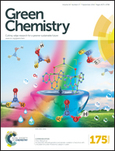
T. M. Lima, C. G. S. Lima, A. K. Rathi, M. B. Gawande, J. Tucek, E. A. Urquieta-González, R. Zbořil, M. W. Paixão, R. S. Varma: Magnetic ZSM-5 zeolite: a selective catalyst for the valorization of furfuryl alcohol to γ-valerolactone, alkyl levulinates or levulinic acid, GREEN CHEM., vol. 18, iss. 20, pp. 5586-5593, 2016.
DOI: 10.1039/c6gc01296e, IF = 9.125
Abstract: A magnetic ZSM-5 zeolite with a core–shell type structure was synthesized, fully characterized and had its catalytic activity evaluated on the valorization of bio-derived furfuryl alcohol. The catalytic system displayed a tuneable selectivity to γ-valerolactone, alkyl levulinates and even levulinic acid by simply changing the reaction conditions. Furthermore, the catalyst could be easily recovered and reused for several reaction cycles without significant losses in its catalytic activity.
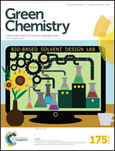
R. K. Sharma, S. Dutta, S. Sharma, R. Zboril, R. S. Varma, M. B. Gawande: Fe3O4(iron oxide)-supported nanocatalysts: synthesis, characterization and applications in coupling reactions, GREEN CHEM. vol. 18, iss. 11, pp. 3184-3209, 2016.
DOI: 10.1039/c6gc00864j, IF = 9.125
Abstract: The use of magnetic nanoparticles as a solid support material for the development of magnetically retrievable catalytic systems has led to a dramatic expansion of their potential applications as they enable environmentally-friendly and sustainable catalytic processes. These quasi-homogeneous catalysts possess numerous benefits such as ease of isolation and separation from the desired reaction mixtures using an external magnet and excellent recyclability. Consequently, much effort has been directed towards the synthesis of magnetically isolable nano-sized particles by developing methods such as co-precipitation, thermal decomposition, microemulsion, hydrothermal techniques etc. Further, in order to render them suitable for catalytic applications, several protection strategies such as surfactant/polymer, silica and carbon coating of magnetic nanoparticles or embedding them in a matrix/support have been reported in the literature. This review focuses on the substantial progress made in the fabrication of nanostructured catalysts with special emphasis on the protection and functionalization of the magnetite nanoparticles (Fe3O4). Finally, considering the importance of coupling chemistry in the field of organic synthesis, a broad overview of the applications of these magnetite nanoparticle-based catalysts in several types of coupling reactions has been presented. The future of catalysis lies in the rational design and development of novel, highly active and recyclable nanocomposite catalysts which would eventually pave the pathway for the establishment of green and sustainable technologies.

A. K. Rathi, M. B. Gawande, J. Pechousek, J. Tucek, C. Aparicio, M. Petr, O. Tomanec, R. Krikavova, Z. Travnicek, R. S. Varma, R. Zboril: Maghemite decorated with ultra-small palladium nanoparticles (γ-Fe2O3–Pd): applications in the Heck–Mizoroki olefination, Suzuki reaction and allylic oxidation of alkenes, GREEN CHEM. vol. 18, iss. 8, pp. 2363-2373, 2016.
DOI: 10.1039/c5gc02264a, IF = 9.125
Abstract: A nanocatalyst comprising ultra-small Pd/PdO nanoparticles (<5 nm) supported on maghemite was prepared by a co-precipitation protocol using inexpensive raw materials and was deployed successfully in various significant synthetic transformations, namely the Heck–Mizoroki olefination (up to 95%), the Suzuki reaction (60–95%), and the allylic oxidation of alkenes under milder conditions. The chemical nature, morphology, size, and loading of palladium nanoparticles over the magnetic support were studied by TEM/EDX, HAADF-STEM chemical mapping, XPS, AAS, and in-field 57Fe Mössbauer spectroscopy. The cost-effective catalyst could be easily separated from the reaction mixture by using an external magnet and reused four times without any loss of activity; chemical stability and recyclability aspects of the catalyst were investigated.
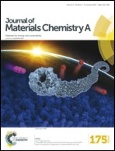
K. J. Datta, M. B. Gawande, K. K. R. Datta, V. Ranc, J. Pechousek, M. Krizek, J. Tucek, R. Kale, P. Pospisil, R. S. Varma, T. Asefa, G. Zoppellaro, R. Zboril: Micro–mesoporous iron oxides with record efficiency for the decomposition of hydrogen peroxide: morphology driven catalysis for the degradation of organic contaminants, J. MATER. CHEM. A vol. 4, iss. 2, pp. 596-604, 2016.
DOI: 10.1039/c5ta08386a, IF = 8.867
Abstract: A template-free solid-state synthesis of a morphologically controlled and highly organized iron(III)oxide micro–mesoporous Fenton catalyst has been engineered through a simple two-step synthetic procedure. The 3D nanoassembly of hematite nanoparticles (5–7 nm) organized into a rod/flower-like morphology shows the highest rate constant reported to date for the decomposition of H2O2 (1.43 × 10−1 min−1) with superior efficiency for the degradation of aromatic (phenol, benzene, ethylbenzene) and chlorinated (trichloroethylene) pollutants in contaminated water. The morphological arrangement of nanoparticles is therefore considered one of the key variables that drive catalysis.
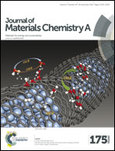
K. Jayaramulu, T. Toyao, V. Ranc, C. Rösler, M. Petr, R. Zboril, Y. Horiuchi, M. Matsuoka, R. A. Fischer: An in situ porous cuprous oxide/nitrogen-rich graphitic carbon nanocomposite derived from a metal–organic framework for visible light driven hydrogen evolution, J. MATER. CHEM. A, vol. 4, pp. 18037–18042, 2016, 2016.
DOI: 10.1039/c6ta07424c, IF = 8.867
Abstract: We report a simple methodology for synthesizing a hybrid of cuprous oxide (Cu2O) nanoparticles with a size less than 6 nm embedded into a porous graphitic nitrogen-rich carbon matrix. The mesoporous composite, Cu2O@C3N, with a surface area of 112 m2 g−1 was prepared by mild pyrolysis (450 °C) of a copper based metal organic framework, Cu3(BTC)2 loaded with urea, (H2N)2CO. The Cu2O@C3N shows a band gap energy of 1.97 eV and acts as an efficient photocatalyst for hydrogen evolution from water under visible light. The amount of evolved H2 is more than 2 times higher than that evolved over pristine carbon nitride and cuprous oxide under the same conditions. Importantly, the composite maintains its catalytic activity even after three catalytic cycles maintaining similar yields. Therefore, the nitrogen-rich porous carbon support serves as a functional scaffold preventing the agglomeration of Cu2O nanoparticles. The key factors responsible for enhanced hydrogen evolution from water are improved visible light absorption, suppressed charge carrier recombination, increased charge separation and high surface area of the composite. We investigated the effect of different pyrolysis temperatures set at 550 and 700 °C on the photocatalytic hydrogen evolution rates. The pyrolysis conditions affect not only the phase transition of copper (copper oxide at 550 °C and pure copper metal at 700 °C) in the resultant composites, but also nitrogen amount incorporation. We believe that this work provides a new insight into the design and fabrication of various efficient and cost-effective nitrogen-rich carbon composites (alternative for noble metals) with superior photocatalytic hydrogen evolution activity.
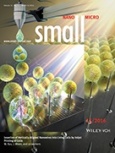
A. Sitt, J. Soukupova, D. Miller, D. Verdi, R. Zboril, H. Hess, J. Lahann: Microscale Rockets and Picoliter Containers Engineered from Electrospun Polymeric Microtubes, SMALL, vol. 12, iss. 11, pp. 1432-1439, 2016.
DOI: 10.1002/smll.201503467, IF = 8.643
Abstract: Chemically functional core/shell microtubes made of biodegradable polymers are fabricated using coaxial electrospinning. The luminal walls are chemically functionalized, allowing for regioselective chemical binding or adsorption inside the microtube. Attaching catalytic nanoparticles or enzymes to the luminal walls converts the microtubes into bubble-propelled microrockets. Upon exposure to ultrasound, the microtubes undergo shape shifting, transforming them into picoliter-scale containers.
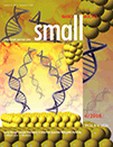
S. Kalytchuk, O. Zhovtiuk, S. V. Kershaw, R. Zbořil, A. L. Rogach: Temperature-Dependent Exciton and Trap-Related Photoluminescence of CdTe Quantum Dots Embedded in a NaCl Matrix: Implication in Thermometry, SMALL vol. 12, iss. 4, pp. 466-476, 2016.
DOI: 10.1002/smll.201501984, IF = 8.643
index
Abstract: Temperature-dependent optical studies of semiconductor quantum dots (QDs) are fundamentally important for a variety of sensing and imaging applications. The steady-state and time-resolved photoluminescence properties of CdTe QDs in the size range from 2.3 to 3.1 nm embedded into a protective matrix of NaCl are studied as a function of temperature from 80 to 360 K. The temperature coefficient is found to be strongly dependent on QD size, with the highest sensitivity obtained for the smallest size of QDs. The emission from solid-state CdTe QD-based powders is maintained with high color purity over a wide range of temperatures. Photoluminescence lifetime data suggest that temperature dependence of the intrinsic radiative lifetime in CdTe QDs is rather weak, and it is mostly the temperature-dependent nonradiative decay of CdTe QDs which is responsible for the thermal quenching of photoluminescence intensity. By virtue of the temperature-dependent photoluminescence behavior, high color purity, photostability, and high photoluminescence quantum yield (26%–37% in the solid state), CdTe QDs embedded in NaCl matrices are useful solid-state probes for thermal imaging and sensing over a wide range of temperatures within a number of detection schemes and outstanding sensitivity, such as luminescence thermochromic imaging, ratiometric luminescence, and luminescence lifetime thermal sensing.
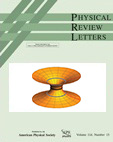
ATLAS Collaboration: Observation of Long-Range Elliptic Azimuthal Anisotropies in s√=13
and 2.76 TeV pp
Collisions with the ATLAS DetectorPHYS. REV. LETT. vol. 116, iss. 17, 2016. DOI: 10.1103/PhysRevLett.116.172301, IF = 8.462
Abstract: ATLAS has measured two-particle correlations as a function of the relative azimuthal angle,
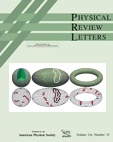
ATLAS Collaboration: Measurement of the ZZ
Production Cross Section in pp
Collisions at s√=13 TeV
with the ATLAS DetectorPHYS. REV. LETT. vol. 116, iss. 10, 2016. DOI: 10.1103/physrevlett.116.101801, IF = 8.462
Abstract: The
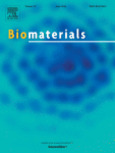
Y. Sarigiannis, Α. Kolokithas-Ntoukas, N. Beziere, R. Zbořil, E. Papadimitriou, K. Avgoustakis, M. Lamprou, Z. Medrikova, E. Rousalis, V. Ntziachristos, A. Bakandritsos: Synthesis and evaluation of condensed magnetic nanocrystal clusters with in vivo multispectral optoacoustic tomography for tumour targeting, BIOMATERIALS vol. 91, pp. 128-139, 2016.
DOI: 10.1016/j.biomaterials.2016.03.015, IF = 8.402
Abstract:
Colloidal clusters of magnetic iron oxide nanocrystals (MIONs), particularly in the condensed pattern (co-CNCs), have emerged as new superstructures to improve further the performance of MIONs in applications pertaining to magnetic manipulation (drug delivery) and magnetic resonance imaging (MRI). Exploitation of the advantages they represent and their establishment in the area of nanomedicine demands a particular set of assets. The present work describes the development and evaluation of MION-based co-CNCs featuring for the first time such assets: High magnetization, as well as magnetic content and moment, high relaxivities (r2 = 400 and ![]() ) and intrinsic loss power (2.3 nH m2 kgFe−1) are combined with unprecedented colloidal stability and structural integrity, stealth and drug-loading properties. The reported nanoconstructs are endowed with additional important features such as cost-effective synthesis and storage, prolonged self-life and biocompatibility. It is finally showcased with in vivo multispectral optoacoustic tomography how these properties culminate in a system suitable for targeting breast cancer and for forceful in vivo manipulation with low magnetic field gradients.
) and intrinsic loss power (2.3 nH m2 kgFe−1) are combined with unprecedented colloidal stability and structural integrity, stealth and drug-loading properties. The reported nanoconstructs are endowed with additional important features such as cost-effective synthesis and storage, prolonged self-life and biocompatibility. It is finally showcased with in vivo multispectral optoacoustic tomography how these properties culminate in a system suitable for targeting breast cancer and for forceful in vivo manipulation with low magnetic field gradients.
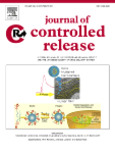
E. Voulgari, A. Bakandritsos, S. Galtsidis, V. Zoumpourlis, B. P. Burke, G. S. Clemente, C. Cawthorne, S. J. Archibald, J. Tuček, R. Zbořil, V. Kantarelou, A. G. Karydas, K. Avgoustakis: Synthesis, characterization and in vivo evaluation of a magnetic cisplatin delivery nanosystem based on PMAA-graft-PEG copolymers, JOURNAL OF CONTROLLED RELEASE vol. 243, pp. 342-356, 2016.
DOI: 10.1016/j.jconrel.2016.10.021, IF = 7.786
Abstract: The development of anticancer drug delivery systems which retain or enhance the cytotoxic properties of the drug to tumorous tissues, while reducing toxicity to other organs is of key importance. We investigated different poly(methacrylic acid)-g-poly(ethyleneglycol methacrylate) polymers as in situ coating agents for magnetite nanocrystallites. The obtained magnetic nano-assemblies were in turn thoroughly characterized for their structural, colloidal and physicochemical properties (drug loading capacity/release, magnetic field triggered drug release, cell uptake and localization) in order to select the best performing system. With the focus on in vivo validation of such magnetic drug delivery systems for first time, we selected cisplatin as the drug, since it is a potent anticancer agent which exhibits serious side effects due to lack of selectivity. In addition, cisplatin would offer facile determination of the metal content in the animal tissues for biodistribution studies. Alongside post-mortem Pt determination in the tissues, the biodistribution of the drug nanocarriers was also monitored in real time with PET-CT (positron emission tomography/computed tomography) with and without the presence of magnetic field gradients; using a novel chelator-free method, the nanoparticles were radiolabeled with 68Ga without having to alter their structure with chemical modifications for conjugation of radiochelators. The ability to be radiolabeled in such a straightforward but very robust way, along with their measured high MRI response, renders them attractive for dual imaging, which is an important functionality for translational investigations. Their anticancer properties were evaluated in vitro and in vivo, in a cisplatin resistant HT-29 human colon adenocarcinoma model, with and without the presence of magnetic field gradients. Enhanced anticancer efficacy and reduced toxicity was recorded for the cisplatin-loaded nanocarriers in comparison to the free cisplatin, particularly when a magnetic field gradient was applied at the tumor site. Post mortem and real-time tissue distribution studies did not reveal increased cisplatin concentration in the tumor site, suggesting that the enhanced anticancer efficacy of the cisplatin-loaded nanocarriers is driven by mechanisms other than increased cisplatin accumulation in the tumors.
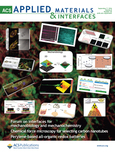
G. D. Peppas, A. Bakandritsos, V. P. Charalampakos, E. C. Pyrgioti, J. Tucek, R. Zboril, I. F. Gonos: Ultrastable Natural Ester Based Nanofluids for High Voltage Insulation Applications, ACS APPL. MATER. INTERFACES, vol. 8, iss. 38, pp. 25202–25209, 2016.
DOI: 10.1021/acsami.6b06084, IF = 7.504
Abstract: Nanofluids for high voltage insulation systems have emerged as a potential substitute of liquid dielectrics in industrial applications. Nevertheless, the sedimentation of nanoparticles has been so far a serious barrier for their wide and effective exploitation. The present work reports on the development and in-depth characterization of colloidally ultrastable natural ester oil insulation systems, containing iron oxide nanocrystals, which lift the problem of sedimentation and phase separation. Compared to state-of the-art systems, the final product is endowed with increased dielectric strength, faster thermal response, lower dielectric losses (decreased dissipation factor- tanδ) and very high endurance during discharge stressing. The developed nanofluid is studied and compared with a similar system containing commercial iron oxide nanoparticles, the latter demonstrating extensive sedimentation. Herein, the dielectric properties of the nanofluids are analyzed at various concentrations by means of breakdown voltage and dissipation factor measurements. The characterization techniques unequivocally demonstrate the high performance-reliability of the reported nanofluid, which constitutes a significant breakthrough in the field of high voltage insulation technologies.
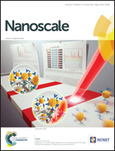
V. Georgakilas, A. Koutsioukis, M. Petr, J. Tucek, R. Zboril: Remarkable enhancement of the electrical conductivity of carbon nanostructured thin films after compression, NANOSCALE vol. 8, iss. 22, pp. 11413-11417, 2016.
DOI: 10.1039/c5nr09025c, IF = 7.367
Abstract: In this work, we demonstrate a significant improvement in the electrical conductivity of carbon nanostructured thin films, composed of graphene nanosheets and multiwalled carbon nanotubes, by compression/polishing. It is shown that the sheet resistance of compressed thin films of carbon nanostructures and hybrids is remarkably decreased in comparison with that of as-deposited films. The number of the interconnections, the distance between the nanostructures as well as their orientation are highly altered by the compression favoring the electrical conductivity of the compressed samples.
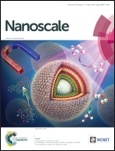
Z. Wang, A. Susha, B. Chen, C. Reckmeier, O. Tomanec, R. Zboril, H. Zhong, A. Rogach: Poly(vinylpyrrolidone) Supported Copper Nanoclusters: Glutathione Enhanced Blue Photoluminescence for Application in Phosphor Converted Light Emitting Devices, NANOSCALE, vol. 8, pp. 7197-7202, 2016.
DOI: 10.1039/c6nr00806b, IF = 7.367
Abstract: Poly(vinylpyrrolidone) supported Cu nanoclusters were synthesized by reduction of Cu (II) ions with asorbic acid in water, and initially showed blue photoluminescence with a quantum yield of 8%. An enhancement of the emission quantum yield has been achieved by treatment of Cu clusters with different electron-rich ligands, with the most pronounced effect (photoluminescence quantum yield of 27%) achieved with glutathione. The bright blue emission of glutathione treated Cu NCs is fully preserved in the solid state powder, which has been combined with commercial green and red phosphors to fabricate down-conversion white light emitting diodes with high colour rendering index of 92.
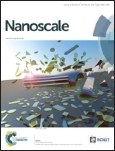
V. Urbanova, F. Karlicky, A. Matej, F. Sembera, Z. Janousek, J. A. Perman, V. Ranc, K. Cepe, J. Michl, M. Otyepka, R. Zboril: Fluorinated graphenes as advanced biosensors - Effect of fluorine coverage on electron transfer properties and adsorption of biomolecules, NANOSCALE, Advance Article, 2016.
DOI: 10.1039/c6nr00353b, IF = 7.367
Abstract: Graphene derivatives are promising materials for the electrochemical sensing of diverse biomolecules and development of new biosensors owing to their improved electron transfer kinetics compared to pristine graphene. Here, we report complex electrochemical behavior and electrocatalytic performance of variously fluorinated graphene derivatives prepared by reaction of graphene with a nitrogen-fluorine mixture at 2 bars pressure. The fluorine content was simply controlled by varying the reaction time and temperature. The studies revealed that electron transfer kinetics and electrocatalytic activity of CFx strongly depend on the degree of fluorination. The versatility of fluorinated graphene as a biosensor platform was demonstrated by cyclic voltammetry for different biomolecules essential in physiological processes, i.e. NADH, ascorbic acid and dopamine. Importantly, the highest electrochemical performance, even higher than pristine graphene, was obtained for fluorinated graphene with the lowest fluorine content (CF0.084) due to its high conductivity and enhanced adsorption properties combining - stacking interaction with graphene regions with hydrogen-bonding interaction with fluorine atoms.
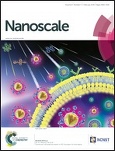
N. Liaros, J. Tucek, K. Dimos, A. Bakandritsos, K. S. Andrikopoulos, D. Gournis, R. Zboril, S. Couris: The effect of the degree of oxidation on broadband nonlinear absorption and ferromagnetic ordering in graphene oxide, NANOSCALE vol. 8, iss. 5, pp. 2908-2917, 2016.
DOI: 10.1039/c5nr07832f, IF = 7.367
Abstract: We report on the effect of the degree of oxidation on the broadband non-linear optical response and magnetic behavior of graphene oxide, as well as on a route for obtaining reduced graphene oxide with enhanced optical properties without sacrificing the high dispersibility of the parent graphene oxide. As more sp3 states evolved with the rise in oxidation degree, it turned out that the sp2/sp3 fraction and sp2 clustering are crucial parameters for tuning the broadband non-linear optical absorption over a wide range from ps to ns laser pulses for both visible and infrared laser irradiation. This was clearly confirmed by two different approaches, namely by a synthetic route through the gradual oxidation of graphene oxide from 1 to 3 oxidizing cycles, and reversely by in situ reduction of graphene oxide by UV laser irradiation. Furthermore, as the sp3 states carry localized magnetic moments, ferromagnetic ordering is observed at low temperatures. The magnetization and temperature at which ferromagnetic ordering evolves are found to increase on increasing the oxidation degree. The tuning of non-linear optical and magnetic properties of graphene oxide by oxidation/reduction thus provides an easy way to endow graphene oxide with tunable physical features highly required in both optoelectronics and spintronics applications.

V. Georgakilas, A. B. Bourlinos, E. Ntararas, A. Ibraliu, D. Gournis, K. Dimos, A. Kouloumpis, and R. Zboril: Graphene nanobuds: Synthesis and selective organic derivatisation, CARBON, vol. 110, pp. 51-55, 2016.
DOI: 10.1016/j.carbon.2016.09.003, IF = 6.337
Abstract: Herein, the formation and selective organic derivatisation of graphene nanobud, an all carbon nanohybrid comprised by C60 and graphene, are presented. C60 cages are directly attached to the graphenic surface with stable covalent bonds. Importantly, prepared graphene nanobud shows remarkable dispersibility, decreased number of defects and highly aromatic character that are associated to improved electrical conductivity compared to pristine graphene. The high chemical reactivity of the curved sp2 carbon atoms of C60 led to a selective covalent attachment of organic groups onto C60 avoiding damage of the graphene aromatic system.

M. Havrdova, K. Hola, J. Skopalik, K. Tomankova, M. Petr, K. Cepe, K. Polakova, J. Tucek, A. B. Bourlinos, R. Zboril: Toxicity of carbon dots – Effect of surface functionalization on the cell viability, reactive oxygen species generation and cell cycle, CARBON vol. 99, pp. 238-248, 2016.
DOI: 10.1016/j.carbon.2015.12.027, IF = 6.337
Abstract: Carbon dots (CDs) are fluorescent nanoprobes offering a great potential in biological and medical applications due to their superior biocompatibility compared to metal chalcogenide quantum dots (e.g., CdSe). Key factors determining their cytotoxicity and cellular/intracellular tracking involve chemical nature and charge of surface functional groups. For the first time, we present a comprehensive cytotoxic study including cell cycle analysis of carbon dots differing in surface functionalization, namely pristine CDs (CDs-Pri) with negative charge due to carboxylic groups, polyethyleneglycol modified dots with neutral charge (CDs-PEG), and polyethylenimine coated dots with a positive charge (CDs-PEI). The CDs in vitro toxicity was studied on standard mouse fibroblasts (NIH/3T3). The results suggest that neutral CDs-PEG are the most promising for biological applications as they do not induce any abnormalities in cell morphology, intracellular trafficking, and cell cycle up to concentrations of 300 μg mL−1. Negatively charged CDs-Pri arrested the G2/M phase of the cell cycle, stimulated proliferation and led to higher oxidative stress, however they did not enter the cell nucleus. In contrast, positively charged CDs-PEI are the most cytotoxic, entering into the cell nucleus and inducing the largest changes in G0/G1 phase of cell cycle, even at concentrations of around 100 μg mL−1.
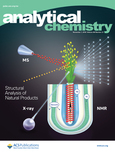
J. Přichystal, K. A. Schug, K. Lemr, J. Novák, V. Havlíček: Structural Analysis of Natural Products, ANALYTICAL CHEMISTRY vol. 88, iss. 21, pp. 10338-10346, 2016.
DOI: 10.1021/acs.analchem.6b02386, IF = 6.320
Abstract: Current mass spectrometry, nuclear magnetic resonance spectroscopy, and X-ray diffraction are presented as structure elucidation tools for analytical chemistry of natural products. Discovering new molecular entities combined with dereplication of known organic compounds represent prerequisites for biological assays and for respective applications as pharmaceuticals or molecular markers. Liquid chromatography is briefly addressed with respect to its use in mass spectrometry- and nuclear magnetic resonance-based metabolomics studies.
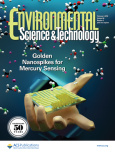
Y. Li, L. Machala, W. Yan: Fe-Impregnated Mineral Colloids for Peroxide Activation: Effects of Mineral Substrate and Fe Precursor, ENVIRONMENTAL SCIENCE & TECHNOLOGY vol. 50, iss. 3, pp. 1190-1199, 2016.
DOI: 10.1021/acs.est.5b03970, IF = 6.198
Abstract:
Heterogeneous iron species at the mineral/water interface are important catalysts for the generation of reactive oxygen species at circumneutral pH. One significant pathway leading to the formation of such species arises from deposition of dissolved iron onto mineral colloids due to changes in redox conditions. This study investigates the catalytic properties of Fe impregnated on silica, alumina, and titania nanoparticles (as prototypical mineral colloids). Fe impregnation was carried out by immersing the mineral nanoparticles in dilute Fe(II) or Fe(III) solutions at pH 6 and 3, respectively, in an aerobic environment. The uptake of iron per unit surface area follows the order of nTiO2 > nAl2O3 > nSiO2 for both types of Fe precursors. Impregnation of mineral particles in Fe(II) solutions results in predominantly Fe(III) species due to efficient surface-mediated oxidation. The catalytic activity of the impregnated solids to produce hydroxyl radical (·OH) from H2O2 decomposition was evaluated using benzoic acid as a probe compound under dark conditions. Invariably, the rates of benzoic acid oxidation with different Fe-laden particles increase with the surface density of Fe until a critical density above which the catalytic activity approaches a plateau, suggesting active Fe species are formed predominantly at low surface loadings. The critical surface density of Fe varies with the mineral substrate as well as the aqueous Fe precursor. Fe impregnated on TiO2 exhibits markedly higher activity than its Al2O3 and SiO2 counterparts. The speciation of interfacial Fe is analyzed with diffuse reflectance UV–vis analysis and interpretation of the data in the context of benzoic oxidation rates suggests that the surface activity of the solids for ·OH generation correlates strongly with the isolated (i.e., mononuclear) Fe species. Therefore, iron dispersed on mineral colloids is a significant form of reactive iron surfaces in the aquatic environment.
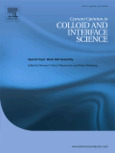
L. Lapčík, M. Otyepka, E. Otyepková, B. Lapčíková, R. Gabriel, A. Gavenda, B. Prudilová: Surface heterogeneity: Information from inverse gas chromatography and application to model pharmaceutical substances, CURRENT OPINION IN COLLOID & INTERFACE SCIENCE vol. 24, pp. 64-71, 2016.
DOI: 10.1016/j.cocis.2016.06.010, IF = 6.136
Abstract: The general theory of electrokinetic phenomena strictly applies to ideal and rigid surfaces or particles. However, many interfaces are non-ideal with respect to both the surface smoothness and surface homogeneity. Detailed knowledge and understanding of the interface structure is often required for proper analysis of electrokinetic measurements. In this study, we investigate the option of studying surface heterogeneity using powder polycrystalline active pharmaceutical ingredients (APIs) as our model systems. We characterized these by a combination of physicochemical techniques, i.e. inverse gas chromatography surface energy analysis, SEM, thermal analysis and powder rheology, to assess the surface interface structure, topology, roughness, chemical heterogeneity and cooperative macroscopic behaviour. The latter characteristics are reflected in the three dimensional packing, which, in turn, affects the porosity and rigidity of the obtained powder bed. Such information is also of paramount interest for realizing proper fluid transport and dispersing or tableting API substances in the pharmaceutical industry. Notably, the 3D packing is affected not only by geometrical characteristics of the powders but also by the polarity and surface charge distribution. These characteristics can be correlated with surface energy data by means of surface energy profiles and surface energy distribution plots.
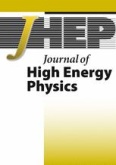
ATLAS Collaboration: Search for anomalous couplings in the W tb vertex from the measurement of double differential angular decay rates of single top quarks produced in the t-channel with the ATLAS detector, JOURNAL OF HIGH ENERGY PHYSICS vol. 2016, iss. 23, 2016.
DOI: 10.1007/JHEP04(2016)023, IF = 6.063
Abstract: The electroweak production and subsequent decay of single top quarks is determined by the properties of the Wtb vertex. This vertex can be described by the complex parameters of an effective Lagrangian. An analysis of angular distributions of the decay products of single top quarks produced in the t -channel constrains these parameters simultaneously. The analysis described in this paper uses 4.6 fb−1 of proton-proton collision data at TeV collected with the ATLAS detector at the LHC. Two parameters are measured simultaneously in this analysis. The fraction f 1 of decays containing transversely polarised W bosons is measured to be 0.37 ± 0.07 (stat.⊕syst.). The phase δ − between amplitudes for transversely and longitudinally polarised W bosons recoiling against left-handed b-quarks is measured to be −0.014π ± 0.036π (stat.⊕syst.). The correlation in the measurement of these parameters is 0.15. These values result in two-dimensional limits at the 95% confidence level on the ratio of the complex coupling parameters g R and V L, yielding Re[g R /V L] ∈ [−0.36, 0.10] and Im[g R /V L] ∈ [−0.17, 0.23] with a correlation of 0.11. The results are in good agreement with the predictions of the Standard Model.

ATLAS Collaboration: Search for strong gravity in multijet final states produced in pp collisions at TeV using the ATLAS detector at the LHC, JOURNAL OF HIGH ENERGY PHYSICS vol. 2016, iss. 3, 2016.
DOI: 10.1007/JHEP03(2016)026, IF = 6.063
Abstract: A search is conducted for new physics in multijet final states using 3.6 inverse femtobarns of data from proton-proton collisions at TeV taken at the CERN Large Hadron Collider with the ATLAS detector. Events are selected containing at least three jets with scalar sum of jet transverse momenta (H T) greater than 1 TeV. No excess is seen at large H T and limits are presented on new physics: models which produce final states containing at least three jets and having cross sections larger than 1.6 fb with H T > 5.8 TeV are excluded. Limits are also given in terms of new physics models of strong gravity that hypothesize additional space-time dimensions.

ATLAS Collaboration: Search for new phenomena with photon+jet events in proton-proton collisions at TeV with the ATLAS detector, JOURNAL OF HIGH ENERGY PHYSICS vol. 2016, iss. 3, 2016.
DOI: 10.1007/JHEP03(2016)041, IF = 6.063
Abstract: A search is performed for the production of high-mass resonances decaying into a photon and a jet in 3.2 fb−1 of proton-proton collisions at a centre-of-mass energy of TeV collected by the ATLAS detector at the Large Hadron Collider. Selected events have an isolated photon and a jet, each with transverse momentum above 150 GeV. No significant deviation of the γ+jet invariant mass distribution from the background-only hypothesis is found. Limits are set at 95% confidence level on the cross sections of generic Gaussian-shaped signals and of a few benchmark phenomena beyond the Standard Model: excited quarks with vector-like couplings to the Standard Model particles, and non-thermal quantum black holes in two models of extra spatial dimensions. The minimum excluded visible cross sections for Gaussian-shaped resonances with width-to-mass ratios of 2% decrease from about 6 fb for a mass of 1.5 TeV to about 0.8 fb for a mass of 5 TeV. The minimum excluded visible cross sections for Gaussian-shaped resonances with width-to-mass ratios of 15% decrease from about 50 fb for a mass of 1.5 TeV to about 1.0 fb for a mass of 5 TeV. Excited quarks are excluded below masses of 4.4 TeV, and non-thermal quantum black holes are excluded below masses of 3.8 (6.2) TeV for Randall-Sundrum (Arkani-Hamed-Dimopoulous-Dvali) models with one (six) extra dimensions.

ATLAS Collaboration: Search for charged Higgs bosons in the H
± → tb decay channel in pp collisions at TeV using the ATLAS detector, JOURNAL OF HIGH ENERGY PHYSICS vol. 2016, iss. 3, 2016.
DOI: 10.1007/JHEP03(2016)127, IF = 6.063
Abstract: Charged Higgs bosons heavier than the top quark and decaying via H ± → tb are searched for in proton-proton collisions measured with the ATLAS experiment at TeV corresponding to an integrated luminosity of 20.3fb−1. The production of a charged Higgs boson in association with a top quark, gb → tH ±, is explored in the mass range 200 to 600 GeV using multi-jet final states with one electron or muon. In order to separate the signal from the Standard Model background, analysis techniques combining several kinematic variables are employed. An excess of events above the background-only hypothesis is observed across a wide mass range, amounting to up to 2.4 standard deviations. Upper limits are set on the gb → tH ± production cross section times the branching fraction BR(H ± → tb). Additionally, the complementary s-channel production, qq ′ → H ±, is investigated through a reinterpretation of W ′ → tb searches in ATLAS. Final states with one electron or muon are relevant for H ± masses from 0.4 to 2.0 TeV, whereas the all-hadronic final state covers the range 1.5 to 3.0 TeV. In these search channels, no significant excesses from the predictions of the Standard Model are observed, and upper limits are placed on the qq ′ → H ± production cross section times the branching fraction BR(H ± → tb).

ATLAS Collaboration: Search for anomalous couplings in the W tb vertex from the measurement of double differential angular decay rates of single top quarks produced in the t-channel with the ATLAS detector, JOURNAL OF HIGH ENERGY PHYSICS vol. 2016, iss. 4, 2016.
DOI: 10.1007/JHEP04(2016)023, IF = 6.063
Abstract: The electroweak production and subsequent decay of single top quarks is determined by the properties of the Wtb vertex. This vertex can be described by the complex parameters of an effective Lagrangian. An analysis of angular distributions of the decay products of single top quarks produced in the t -channel constrains these parameters simultaneously. The analysis described in this paper uses 4.6 fb−1 of proton-proton collision data at TeV collected with the ATLAS detector at the LHC. Two parameters are measured simultaneously in this analysis. The fraction f 1 of decays containing transversely polarised W bosons is measured to be 0.37 ± 0.07 (stat.⊕syst.). The phase δ − between amplitudes for transversely and longitudinally polarised W bosons recoiling against left-handed b-quarks is measured to be −0.014π ± 0.036π (stat.⊕syst.). The correlation in the measurement of these parameters is 0.15. These values result in two-dimensional limits at the 95% confidence level on the ratio of the complex coupling parameters g R and V L, yielding Re[g R /V L] ∈ [−0.36, 0.10] and Im[g R /V L] ∈ [−0.17, 0.23] with a correlation of 0.11. The results are in good agreement with the predictions of the Standard Model.

ATLAS Collaboration: Search for a high-mass Higgs boson decaying to a W boson pair in pp collisions at TeV with the ATLAS detector", JOURNAL OF HIGH ENERGY PHYSICS vol. 2016, iss. 1, 2016.
DOI: 10.1007/JHEP01(2016)032, IF = 6.063
Abstract: A search for a high-mass Higgs boson H is performed in the H → WW → ℓνℓν and H → WW → ℓνqq decay channels using pp collision data corresponding to an integrated luminosity of 20.3 fb−1 collected at TeV by the ATLAS detector at the Large Hadron Collider. No evidence of a high-mass Higgs boson is found. Limits on σ H × BR(H → WW) as a function of the Higgs boson mass m H are determined in three different scenarios: one in which the heavy Higgs boson has a narrow width compared to the experimental resolution, one for a width increasing with the boson mass and modeled by the complex-pole scheme following the same behavior as in the Standard Model, and one for intermediate widths. The upper range of the search is m H = 1500 GeV for the narrow-width scenario and m H = 1000 GeV for the other two scenarios. The lower edge of the search range is 200–300 GeV and depends on the analysis channel and search scenario. For each signal interpretation, individual and combined limits from the two WW decay channels are presented. At m H = 1500 GeV, the highest-mass point tested, σ H × BR(H → WW) for a narrow-width Higgs boson is constrained to be less than 22 fb and 6.6 fb at 95% CL for the gluon fusion and vector-boson fusion production modes, respectively.

Measurement of the production cross-section of a single top quark in association with a W boson at 8 TeV with the ATLAS experiment", JOURNAL OF HIGH ENERGY PHYSICS vol. 2016, iss. 1, 2016.
DOI: 10.1007/JHEP01(2016)064, IF = 6.063
Abstract: The cross-section for the production of a single top quark in association with a W boson in proton-proton collisions at 8TeV is measured. The dataset corresponds to an integrated luminosity of 20.3 fb−1, collected by the ATLAS detector in 2012 at the Large Hadron Collider at CERN. Events containing two leptons and one central b-jet are selected. The W t signal is separated from the backgrounds using boosted decision trees, each of which combines a number of discriminating variables into one classifier. Production of W t events is observed with a significance of 7.7σ. The cross-section is extracted in a profile likelihood fit to the classifier output distributions. The W t cross-section, inclusive of decay modes, is measured to be 23.0 ± 1.3(stat.) − 3.5 + 3.2 (syst.)±1.1(lumi.) pb. The measured cross-section is used to extract a value for the CKM matrix element |V tb | of 1.01 ± 0.10 and a lower limit of 0.80 at the 95% confidence level. The cross-section for the production of a top quark and a W boson is also measured in a fiducial acceptance requiring two leptons with p T > 25 GeV and |η| < 2.5, one jet with p T > 20 GeV and |η| < 2.5, and E T miss > 20 GeV, including both W t and top-quark pair events as signal. The measured value of the fiducial cross-section is 0.85 ± 0.01(stat.) − 0.07 + 0.07 (syst.)±0.03(lumi.) pb.

ATLAS Collaboration: Search for invisible decays of a Higgs boson using vector-boson fusion in pp collisions at TeV with the ATLAS detector, JOURNAL OF HIGH ENERGY PHYSICS vol. 50, iss. 3, 2016.
DOI: 10.1007/JHEP01(2016)172, IF = 6.063
Abstract: A search for a Higgs boson produced via vector-boson fusion and decaying into invisible particles is presented, using 20.3 fb−1 of proton-proton collision data at a centre-of-mass energy of 8 TeV recorded by the ATLAS detector at the LHC. For a Higgs boson with a mass of 125 GeV, assuming the Standard Model production cross section, an upper bound of 0.28 is set on the branching fraction of H → invisible at 95% confidence level, where the expected upper limit is 0.31. The results are interpreted in models of Higgs-portal dark matter where the branching fraction limit is converted into upper bounds on the dark-matter-nucleon scattering cross section as a function of the dark-matter particle mass, and compared to results from the direct dark-matter detection experiments.
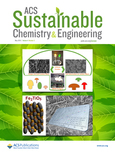
P. Slovák, O. Malina, J. Kašlík, O. Tomanec, J. Tuček, M. Petr, J. Filip, G. Zoppellaro, R. Zbořil: Zero-Valent Iron Nanoparticles with Unique Spherical 3D Architectures Encode Superior Efficiency in Copper Entrapment, ACS SUSTAINABLE CHEMISTRY & ENGINEERING vol. 4, iss. 5, pp. 2748-2753, 2016.
DOI: 10.1021/acssuschemeng.6b00242, IF = 5.951
Abstract: The large-scale preparation of spherical condensed-type superstructures of zero-valent iron (nZVI), obtained by controlled solid-state reaction through a morphologically conserved transformation of a magnetite precursor, is herein reported. The formed 3D nanoarchitectures (S-nZVI) exhibit enhanced entrapment efficiency of heavy metal pollutants, such as copper, compared to all previously tested materials reported in the literature, thus unveiling the relevance in the material’s design of the morphological variable. The superior removal efficiency of these mesoporous S-nZVI superstructures is linked to their extraordinary ability to couple effectively processes such as reduction and sorption of the metal pollutant.
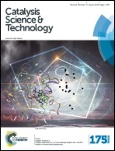
A. K. Rathi, M. B. Gawande, V. Ranc, J. Pechousek, M. Petr, K. Cepe, R. S. Varma, R. Zboril: Continuous flow hydrogenation of nitroarenes, azides and alkenes using maghemite–Pd nanocomposites, CATAL. SCI. TECHNOL. vol. 6, iss. 1, pp. 152-160, 2016.
DOI: 10.1039/c5cy00956a, IF = 5.773
Abstract: Maghemite-supported ultra-fine Pd (1–3 nm) nanoparticles, prepared by a simple co-precipitation method, find application in the catalytic continuous flow hydrogenation of nitroarenes, azides, and alkenes wherein they play an important role in the reduction of various functional groups on the surface of maghemite with catalyst loading (~6 wt% Pd). The salient features of the protocol include expeditious formation of reduced products in high yields under near ambient conditions with recycling of the catalyst (up to 12 cycles) without any decrease in selectivity and yield.
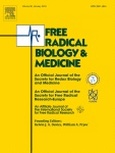
M. Pyszková, M. Biler, D. Biedermann, K. Valentová, M. Kuzma, J. Vrba, J. Ulrichová, R. Sokolová, M. Mojović, A. Popović-Bijelić, M. Kubala, P. Trouillas, V. Křen, J. Vacek: Flavonolignan 2,3-dehydroderivatives: Preparation, antiradical and cytoprotective activity, FREE RADICAL BIOLOGY AND MEDICINE vol. 90, pp. 114-125, 2016.
DOI: 10.1016/j.freeradbiomed.2015.11.014, IF = 5.606
Abstract: The protective constituents of silymarin, an extract from Silybum marianum fruits, have been extensively studied in terms of their antioxidant and hepatoprotective activities. Here, we explore the electron-donor properties of the major silymarin flavonolignans. Silybin (SB), silychristin (SCH), silydianin (SD) and their respective 2,3-dehydroderivatives (DHSB, DHSCH and DHSD) were oxidized electrochemically and their antiradical/antioxidant properties were investigated. Namely, Folin–Ciocalteau reduction, DPPH and ABTS+ radical scavenging, inhibition of microsomal lipid peroxidation and cytoprotective effects against tert -butyl hydroperoxide-induced damage to a human hepatocellular carcinoma HepG2 cell line were evaluated. Due to the presence of the highly reactive C3-OH group and the C-2,3 double bond (ring C) allowing electron delocalization across the whole structure in the 2,3-dehydroderivatives, these compounds are much more easily oxidized than the corresponding flavonolignans SB, SCH and SD. This finding was unequivocally confirmed not only by experimental approaches, but also by density functional theory (DFT) calculations. The hierarchy in terms of ability to undergo electrochemical oxidation (DHSCH~DHSD>DHSB![]() SCH/SD>SB) was consistent with their antiradical activities, mainly DPPH scavenging, as well as in vitro cytoprotection of HepG2 cells. The results are discussed in the context of the antioxidant vs. prooxidant activities of flavonolignans and molecular interactions in complex biological systems.
SCH/SD>SB) was consistent with their antiradical activities, mainly DPPH scavenging, as well as in vitro cytoprotection of HepG2 cells. The results are discussed in the context of the antioxidant vs. prooxidant activities of flavonolignans and molecular interactions in complex biological systems.

L. Plačková, J. Oklestkova, K. Pospíšková, K. Poláková, J. Buček, J. Stýskala, M. Zatloukal, I. Šafařík, R. Zbořil, M. Strnad, K. Doležal, O. Novák: Microscale magnetic microparticle-based immunopurification of cytokinins from Arabidopsis root apex, THE PLANT JOURNAL, vol. 89, iss. 5, pp. 1065-1075, 2016.
DOI: 10.1111/tpj.13443, IF = 5.468
Abstract: Cytokinins (CKs), pivotal plant hormones, play crucial roles in plant growth and development. However, their isolation and quantification are usually challenging because of their extremely low levels in plant tissues (pmol/g fresh weight). We have developed a simple microscale magnetic immunoaffinity-based method for selective one-step isolation of CKs from very small amounts of plant tissue (less than 0.1 mg fresh weight). The capacity of the immunosorbent and effect of the complex plant matrix on the yield of the rapid one-step purification were tested using a wide range of CK concentrations. The total recovery range of the new microscale isolation procedure was found to be 30–80% depending on individual CKs. Immunoaffinity extraction using group-specific monoclonal CK antibodies immobilized onto magnetic microparticles was combined with a highly-sensitive ultrafast mass spectrometry-based method with detection limit close to one attomole. This combined approach allowed metabolic profiling of a wide range of naturally occurring CKs (bases, ribosides and N9-glucosides) in 1.0 mm sections of Arabidopsis thaliana root meristematic zone. The magnetic immunoaffinity separation method was shown to be a simple and extremely fast procedure requiring minimal amounts of plant tissue.
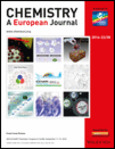
L. Wang, Z. Sofer, R. Zboril, K. Cepe, M. Pumera: Phosphorus and Halogen Co-Doped Graphene Materials and their Electrochemistry, CHEMISTRY - A EUROPEAN JOURNAL, vol. 22, iss. 43, pp. 15444-15450, 2016.
DOI: 10.1002/chem.201602616, IF = 5.317
Abstract: Doping of graphene materials with heteroatoms is important as it can change their electronic and electrochemical properties. Here, graphene is co-doped with n-type dopants such as phosphorus and halogen (Cl, Br, I). Phosphorus and halogen are introduced through the treatment of graphene oxide with PX3 gas (PCl3, PBr3, and PI3). Graphene oxides are prepared through chlorate and permanganate routes. Detailed chemical and structural characterization demonstrates that the graphene sheets are covered homogeneously by phosphorus and halogen atoms. It is found that the amount of phosphorus and halogen introduced depends on the graphene oxide preparation method. The electrocatalytic effect of the resulting co-doped materials is demonstrated for industrially relevant electrochemical reactions such as the hydrogen evolution and oxygen reduction reactions.
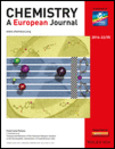
P. Jakubec, V. Urbanová, Z. Medříková, R. Zbořil: Advanced Sensing of Antibiotics with Magnetic Gold Nanocomposite: Electrochemical Detection of Chloramphenicol, CHEMISTRY - A EUROPEAN JOURNAL, vol. 22, iss. 40, pp. 14279-14284, 2016.
DOI: 10.1002/chem.201602434, IF = 5.317
Abstract: The sensing and accurate determination of antibiotics in various environments represents a big challenge, mainly owing to their widespread use in medicine, veterinary practice, and other fields. Therefore, a new, simple electrochemical sensor for the detection of antibiotic chloramphenicol (CAP) has been developed in this work. The amplification strategy of the sensor is based on the application of magnetite nanostructures stabilized with carboxymethyl cellulose (Fe3O4-CMC) and decorated with nanometer-sized Au nanoparticles (NPs) (Fe3O4-CMC@Au). In this case, CMC serves as a stabilizing agent, preventing the aggregation of Fe3O4 NPs, and hence, enabling the kinetic barrier for electron transport to be overcome, and the Au NPs serve as an electron-conducting tunnel for better electron transport. As a proof of concept, the developed nanosensor is used for the detection of CAP in human urine samples, giving a recovery value of around 97 %, which indicates the high accuracy of the as-prepared nanosensor.
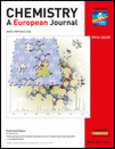
E. Bonaiuto, M. Magro, D. Baratella, P. Jakubec, E. Sconcerle, M. Terzo, G. Miotto, A. Macone, E. Agostinelli, S. Fasolato, R. Venerando, G. Salviulo, O. Malina, R. Zboril, F. Vianello: Ternary Hybrid γ-Fe2O3/CrVI/Amine Oxidase Nanostructure for Electrochemical Sensing: Application for Polyamine Detection in Tumor Tissue, CHEMISTRY - A EUROPEAN JOURNAL vol. 22, iss. 20, pp. 6846-6852, 2016.
DOI: 10.1002/chem.201600156, IF = 5.317
Abstract: Dichromate binds to surface-active maghemite nanoparticles (SAMNs) to form a stable core–shell nanostructures (SAMN@CrVI). The hybrid was characterized by Mössbauer spectroscopy, high-angle annular dark-field imaging, electron energy-loss spectroscopy, and electrochemical techniques, which revealed a strong interaction of dichromate with the nanoparticle surface. Electrochemical characterization showed lower charge-transfer resistance, better electrochemical performance, and more reversible electrochemical behavior with respect to naked SAMNs. Moreover, SAMN@CrVI is an excellent electrocatalyst for hydrogen peroxide reduction. Furthermore, an enzyme, namely, bovine serum amine oxidase (BSAO: EC 1.4.3.6), was immobilized on SAMN@CrVI by self-assembly to give a ternary hybrid nanostructured catalyst for polyamine oxidation (SAMN@CrVI-BSAO). SAMN@CrVI-BSAO was applied for the development of a reagentless, fast, inexpensive, and interference-free polyamine biosensor, which was successfully exploited for the discrimination of tumorous tissue from healthy tissue in human crude liver extracts.
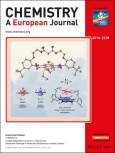
O. Vrana, V. Novohradsky, Z. Medrikova, J. Burdikova, O. Stuchlikova, J. Kasparkova, V. Brabec: Internalization of Ineffective Platinum Complex in Nanocapsules Renders It Cytotoxic, CHEMISTRY - A EUROPEAN JOURNAL vol. 22, iss. 8, pp. 2728-2735, 2016.
DOI: 10.1002/chem.201504671, IF = 5.317
Abstract: Anticancer therapy by platinum complexes, based on nanocarrier-based delivery, may offer a new approach to improve the efficacy and tolerability of the platinum family of anticancer drugs. The original rules for the design of new anticancer platinum drugs were affected by the fact that, although cisplatin (cis-[PtCl2(NH3)2) was an anticancer drug, its isomer transplatin was not cytotoxic. For the first time, it is demonstrated that simple encapsulation of an inactive platinum compound in phospholipid bilayers transforms it into an efficient cytotoxic agent. Notably, the encapsulation of transplatin makes it possible to overcome the resistance mechanisms operating in cancer cells treated with cisplatin and prevents inactivation of transplatin in the extracellular environment. It is also shown that transplatin delivered to the cells in nanocapsules, in contrast to free (nonencapsulated) complex, forms cytotoxic cross-links on DNA.
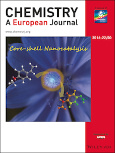
K. J. Datta, K. K. R. Datta, M. B. Gawande, V. Ranc, K. Čépe, V. Malgras, Y. Yamauchi, R. S. Varma, R. Zboril: Pd@Pt Core-Shell Nanoparticles with Branched Dandelion-like Morphology as Highly Efficient Catalysts for Olefin Reduction, CHEMISTRY - A EUROPEAN JOURNAL, 2016.
DOI: 10.1002/chem.201504656, IF = 5.317
Abstract: A facile synthesis of highly branched core-shell nanoparticles with unique dandelion-like morphology comprising Pd core and Pt shell is presented. The Pd@Pt core-shell nanoparticles efficiently catalyze the reduction of a range of olefins with excellent yields. Synergistic effects due to a large surface area and unique micro–mesoporous structure, with mesopores that are several tens of nanometers in size, lead to superior catalytic behavior.
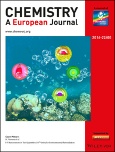
W. Z. Teo, R. Zboril, I. Medrik, M. Pumera: Fe0 Nanomotors in Ton Quantities (1020 Units) for Environmental Remediation , CHEMISTRY - A EUROPEAN JOURNAL, 2016.
DOI: 10.1002/chem.201600401, IF = 5.317
Abstract: Bubble-propelled Fe0 Janus nanomotors show their potential as decontamination agents of pollutants in Indonesian coral reefs. Enhanced pollutant decomposition triggered by biocompatible Fe0 motors, which can be handled in air and fabricated in ton quantities for a low cost, will revolutionize the way the environmental remediation is carried out.
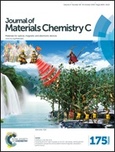
K. K. Datta, G. Qi, R. Zboril, E. P. Giannelis: Yellow emitting carbon dots with superior colloidal, thermal, and photochemical stability, J. MATER. CHEM. C, vol. 4, iss.41, pp. 9798, 2016.
DOI: 10.1039/c6tc03452g, IF = 5.256
Abstract: Herein we report the hydrothermal synthesis of yellow emitting carbon dots, CDs, in high salinity water and compare them with those prepared in distilled water. The saline environment significantly affects the surface chemistry and charge on the CDs. We also present data on their long-term colloidal and photochemical stability in distilled and saline water at ambient and high temperature. The facile preparation and shelf life stability coupled with their improved photochemical and thermal properties makes them potentially applicant as tracers for biomedical, subsurface and other technologies requiring stability under harsh conditions.
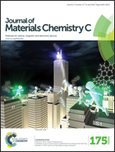
Y. Wang, K. Čépe, R. Zbořil: UV light-switchable transparent polymer films and invisible luminescent inks based on carbon dots and lanthanide complexes, J. MATER. CHEM. C, 2016.
DOI: 10.1039/c6tc01546h, IF = 5.256
Abstract: We present a simple approach for the preparation of UV light-switchable transparent composite polymer films and invisible luminescent inks based on the combination of carbon dots (CDs) and trisdipicolinate lanthanide complexes. The emission colors of the resulting polymer films and inks can be switched from multicolor of lanthanide complexes to blue color of CDs depending on the change in UV light illumination from 254 to 365 nm. The facile preparation and unique optical features make these materials applicable in numerous fields involving advanced optical devices and anti-counterfeiting technologies.
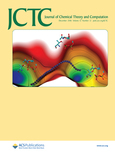
P. Stadlbauer, L. Mazzanti, T. Cragnolini, D. J. Wales, P. Derreumaux, S. Pasquali, J. Šponer: Coarse-Grained Simulations Complemented by Atomistic Molecular Dynamics Provide New Insights into Folding and Unfolding of Human Telomeric G-Quadruplexes, JOURNAL OF CHEMICAL THEORY AND COMPUTATION vol. 12, iss. 12, pp. 6077-6097, 2016.
DOI: 10.1021/acs.jctc.6b00667, IF = 5.245
Abstract: G-quadruplexes are the most important noncanonical DNA architectures. Many quadruplex-forming sequences, including the human telomeric sequence d(GGGTTA)n, have been investigated due to their implications in cancer and other diseases, and because of their potential in DNA-based nanotechnology. Despite the availability of atomistic structural studies of folded G-quadruplexes, their folding pathways remain mysterious, and mutually contradictory models of folding coexist in the literature. Recent experiments convincingly demonstrated that G-quadruplex folding often takes days to reach thermodynamic equilibrium. Based on atomistic simulations of diverse classes of intermediates in G-quadruplex folding, we have suggested that the folding is an extremely multipathway process combining a kinetic partitioning mechanism with conformational diffusion. However, complete G-quadruplex folding is far beyond the time scale of atomistic simulations. Here we use high-resolution coarse-grained simulations to investigate potential unfolding intermediates, whose structural dynamics are then further explored with all-atom simulations. This multiscale approach indicates how various pathways are interconnected in a complex network. Spontaneous conversions between different folds are observed. We demonstrate the inability of simple order parameters, such as radius of gyration or the number of native H-bonds, to describe the folding landscape of the G-quadruplexes. Our study also provides information relevant to further development of the coarse-grained force field.
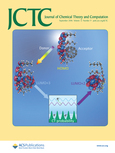
P. Kührová, R. B. Best, S. Bottaro, G. Bussi, J. Šponer, M. Otyepka, P. Banáš: Computer Folding of RNA Tetraloops: Identification of Key Force Field Deficiencies, JOURNAL OF CHEMICAL THEORY AND COMPUTATION vol. 12, iss. 9, pp. 4534-4548, 2016.
DOI: 10.1021/acs.jctc.6b00300, IF = 5.245
Abstract: The computer-aided folding of biomolecules, particularly RNAs, is one of the most difficult challenges in computational structural biology. RNA tetraloops are fundamental RNA motifs playing key roles in RNA folding and RNA–RNA and RNA–protein interactions. Although state-of-the-art Molecular Dynamics (MD) force fields correctly describe the native state of these tetraloops as a stable free-energy basin on the microsecond time scale, enhanced sampling techniques reveal that the native state is not the global free energy minimum, suggesting yet unidentified significant imbalances in the force fields. Here, we tested our ability to fold the RNA tetraloops in various force fields and simulation settings. We employed three different enhanced sampling techniques, namely, temperature replica exchange MD (T-REMD), replica exchange with solute tempering (REST2), and well-tempered metadynamics (WT-MetaD). We aimed to separate problems caused by limited sampling from those due to force-field inaccuracies. We found that none of the contemporary force fields is able to correctly describe folding of the 5′-GAGA-3′ tetraloop over a range of simulation conditions. We thus aimed to identify which terms of the force field are responsible for this poor description of TL folding. We showed that at least two different imbalances contribute to this behavior, namely, overstabilization of base–phosphate and/or sugar–phosphate interactions and underestimated stability of the hydrogen bonding interaction in base pairing. The first artifact stabilizes the unfolded ensemble, while the second one destabilizes the folded state. The former problem might be partially alleviated by reparametrization of the van der Waals parameters of the phosphate oxygens suggested by Case et al., while in order to overcome the latter effect we suggest local potentials to better capture hydrogen bonding interactions.

R. Galindo-Murillo, J. C. Robertson, M. Zgarbová, J. Šponer, M. Otyepka, P. Jurečka, T. E. Cheatham: Assessing the Current State of Amber Force Field Modifications for DNA, JOURNAL OF CHEMICAL THEORY AND COMPUTATION vol. 12, iss. 8, pp. 4114-4127, 2017.
DOI: 10.1021/acs.jctc.6b00186, IF = 5.245
Abstract: The utility of molecular dynamics (MD) simulations to model biomolecular structure, dynamics, and interactions has witnessed enormous advances in recent years due to the availability of optimized MD software and access to significant computational power, including GPU multicore computing engines and other specialized hardware. This has led researchers to routinely extend conformational sampling times to the microsecond level and beyond. The extended sampling time has allowed the community not only to converge conformational ensembles through complete sampling but also to discover deficiencies and overcome problems with the force fields. Accuracy of the force fields is a key component, along with sampling, toward being able to generate accurate and stable structures of biopolymers. The Amber force field for nucleic acids has been used extensively since the 1990s, and multiple artifacts have been discovered, corrected, and reassessed by different research groups. We present a direct comparison of two of the most recent and state-of-the-art Amber force field modifications, bsc1 and OL15, that focus on accurate modeling of double-stranded DNA. After extensive MD simulations with five test cases and two different water models, we conclude that both modifications are a remarkable improvement over the previous bsc0 force field. Both force field modifications show better agreement when compared to experimental structures. To ensure convergence, the Drew–Dickerson dodecamer (DDD) system was simulated using 100 independent MD simulations, each extended to at least 10 μs, and the independent MD simulations were concatenated into a single 1 ms long trajectory for each combination of force field and water model. This is significantly beyond the time scale needed to converge the conformational ensemble of the internal portions of a DNA helix absent internal base pair opening. Considering all of the simulations discussed in the current work, the MD simulations performed to assess and validate the current force fields and water models aggregate over 14 ms of simulation time. The results suggest that both the bsc1 and OL15 force fields render average structures that deviate significantly less than 1 Å from the average experimental structures. This can be compared to similar but less exhaustive simulations with the CHARMM 36 force field that aggregate to the ∼90 μs time scale and also perform well but do not produce structures as close to the DDD NMR average structures (with root-mean-square deviations of 1.3 Å) as the newer Amber force fields. On the basis of these analyses, any future research involving double-stranded DNA simulations using the Amber force fields should employ the bsc1 or OL15 modification.
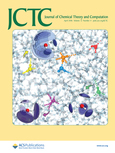
M. Paloncýová, V. Navrátilová, K. Berka, A. Laio, M. Otyepka: Role of Enzyme Flexibility in Ligand Access and Egress to Active Site: Bias-Exchange Metadynamics Study of 1,3,7-Trimethyluric Acid in Cytochrome P450 3A4, J. CHEM. THEORY COMPUT., vol. 12, iss. 4, pp. 2101-2109, 2016.
DOI: 10.1021/acs.jctc.6b00075, IF = 5.245
Abstract: Although the majority of enzymes have buried active sites, very little is known about the energetics and mechanisms associated with substrate and product channeling in and out. Gaining direct information about these processes is a challenging task both for experimental and theoretical techniques. Here, we present a methodology that enables following of a ligand during its passage to the active site of cytochrome P450 (CYP) 3A4 and mapping of the free energy associated with this process. The technique is based on a combination of a bioinformatics tool for identifying access channels and bias-exchange metadynamics and provides converged free energies in good agreement with experimental data. In addition, it identifies the energetically preferred escape routes, limiting steps, and amino acids residues lining the channel. The approach was applied to mapping of a complex channel network in a complex environment, i.e., CYP3A4 attached to a lipid bilayer mimicking an endoplasmic reticulum membrane. The results provided direct information about the energetics and conformational changes associated with the ligand channeling. The methodology can easily be adapted to study channeling through other flexible biomacromolecular channels.

R. Sedlak, O. A. Stasyuk, C. Fonseca Guerra, J. Řezáč, A. Růžička, P. Hobza: New Insight into the Nature of Bonding in the Dimers of Lappert’s Stannylene and Its Ge Analogs: A Quantum Mechanical Study, J. CHEM. THEORY COMPUT. vol. 12, iss. 4, pp. 1696-1704, 2016.
DOI: 10.1021/acs.jctc.6b00065, IF = 5.245
Abstract: The strength and nature of the connection in Lappert’s stannylene dimer ({Sn[CH(SiMe3)2]2}2) and its smaller analogs, simplified stannylenes, as well as similar Ge complexes were studied by means of DFT-D3 calculations, energy decomposition analysis (EDA), electrostatic potential (ESP), and natural population analysis. The trans-bent structure of the investigated molecules was rationalized by means of EDA, ESP, and molecular orbital (MO) analyses. The different ESPs for the monomers studied are a result of different hybridization of the Sn (Ge) atoms. The comparably strong stabilization in the largest and the smallest systems with a dramatically different substituent size is explained by the different nature of the binding between monomers. For all complexes, it has been found that the total attractive interaction is mostly provided by the electrostatic component (>50%), followed by orbital interaction and dispersion. In the largest molecule (Lappert’s stannylene), the dispersion interaction plays a more significant role in stabilization and its magnitude is comparable to that of orbital interaction; on the other hand in the smallest molecule (SnH2), where bulky substituents are replaced by H only, the dispersion energy is less important and the E–E bond is more of a charge-transfer character, caused by donor–acceptor orbital interactions. The charge transfer in Ge dimers is greater than in the Sn ones due to shorter distances between monomers, which cause better ⟨HOMO/LUMO⟩ overlaps. The easier dimerization of Lappert’s stannylene as compared to Kira’s ({Sn[(Me3Si)2CHCH2CH2CH(SiMe3)2-κ2C,C′]}) stannylene is explained by the different orientation of their substituents—asymmetry promotes dimerization.

The IceCube, Pierre Auger and Telescope Array collaborations: "Search for correlations between the arrival directions of IceCube neutrino events and ultrahigh-energy cosmic rays detected by the Pierre Auger Observatory and the Telescope Array", JOURNAL OF COSMOLOGY AND ASTROPARTICLE PHYSICS vol. 2016, 2016.
DOI: 10.1088/1475-7516/2016/01/037, IF = 4.734
Abstract: This paper presents the results of different searches for correlations between very high-energy neutrino candidates detected by IceCube and the highest-energy cosmic rays measured by the Pierre Auger Observatory and the Telescope Array. We first consider samples of cascade neutrino events and of high-energy neutrino-induced muon tracks, which provided evidence for a neutrino flux of astrophysical origin, and study their cross-correlation with the ultrahigh-energy cosmic ray (UHECR) samples as a function of angular separation. We also study their possible directional correlations using a likelihood method stacking the neutrino arrival directions and adopting different assumptions on the size of the UHECR magnetic deflections. Finally, we perform another likelihood analysis stacking the UHECR directions and using a sample of through-going muon tracks optimized for neutrino point-source searches with sub-degree angular resolution. No indications of correlations at discovery level are obtained for any of the searches performed. The smallest of the p-values comes from the search for correlation between UHECRs with IceCube high-energy cascades, a result that should continue to be monitored.

K. Bartkiewicz, A. Černoch, K. Lemr, A. Miranowicz: Priority Choice Experimental Two-Qubit Tomography: Measuring One by One All Elements of Density Matrices, SCI. REP. vol. 6, pp. 19610, 2016.
DOI: 10.1038/srep19610, IF=4.259
Abstract: In standard optical tomographic methods, the off-diagonal elements of a density matrix ρ are measured indirectly. Thus, the reconstruction of ρ, even if it is based on linear inversion, typically magnifies small errors in the experimental data. Recently, an optimal tomography solution measuring all the elements of ρ one-by-one without error magnification has been theoretically proposed. We implemented this method for two-qubit polarization states. For comparison, we also experimentally implemented other well-known tomographic protocols, either based solely on local measurements (of, e.g., the Pauli operators and James-Kwiat-Munro-White projectors) or with mutually unbiased bases requiring both local and global measurements. We reconstructed seventeen separable, partially and maximally entangled two-qubit polarization states. Our experiments show that our method has the highest stability against errors in comparison to other quantum tomographies. In particular, we demonstrate that each optimally-reconstructed state is embedded in an uncertainty circle of the smallest radius, both in terms of trace distance and disturbance. We explain how to experimentally estimate uncertainty radii for all the implemented tomographies and show that, for each reconstructed state, the relevant uncertainty circles intersect indicating the approximate location of the corresponding physical density matrix.

J. Peřina, O. Haderka, A. Allevi, M. Bondani: Internal dynamics of intense twin beams and their coherence, SCI. REP. vol. 6, pp. 22320, 2016.
DOI: 10.1038/srep22320, IF=4.259
Abstract: The dynamics of intense twin beams in pump-depleted parametric down-conversion is studied. A generalized parametric approximation is suggested to solve the quantum model. Its comparison with a semiclassical model valid for larger twin-beam intensities confirms its applicability. The experimentally observed maxima in the spectral and spatial intensity auto- and cross- correlation functions depending on pump power are explained in terms of different speeds of the (back-) flow of energy between the individual down-converted modes and the corresponding pump modes. This effect is also responsible for the gradual replacement of the initial exponential growth of the down-converted fields by the linear one. Furthermore, it forms a minimum in the curve giving the effective number of twin-beam modes. These effects manifest a tight relation between the twin-beam coherence and its internal structure, as clearly visible in the model. Multiple maxima in the intensity correlation functions originating in the oscillations of energy flow between the pump and down-converted modes are theoretically predicted.


